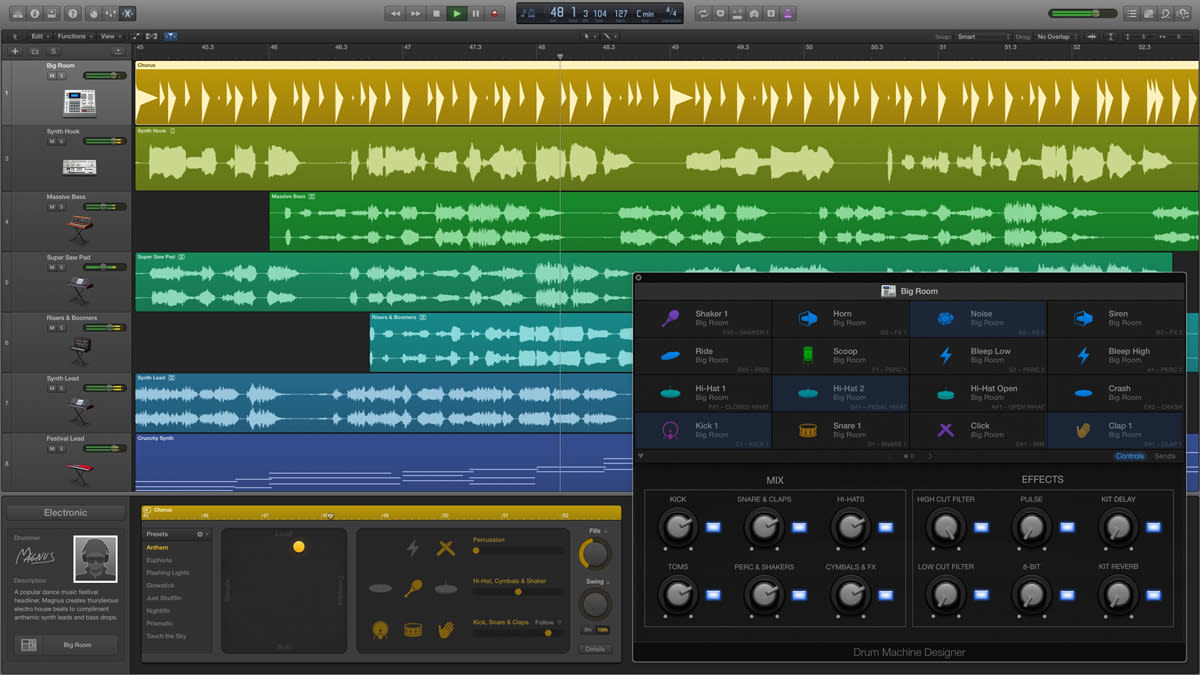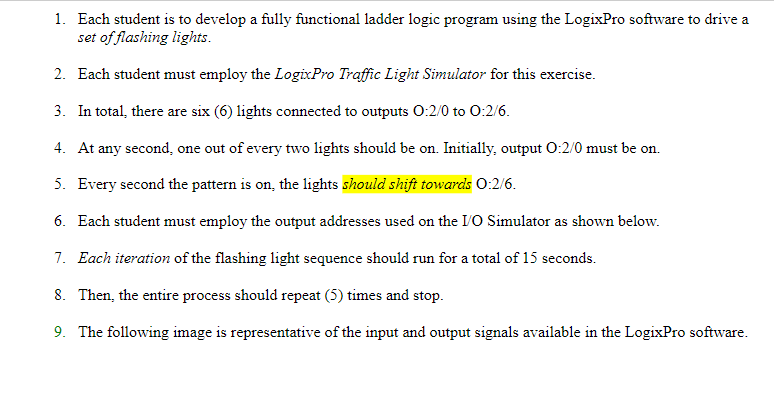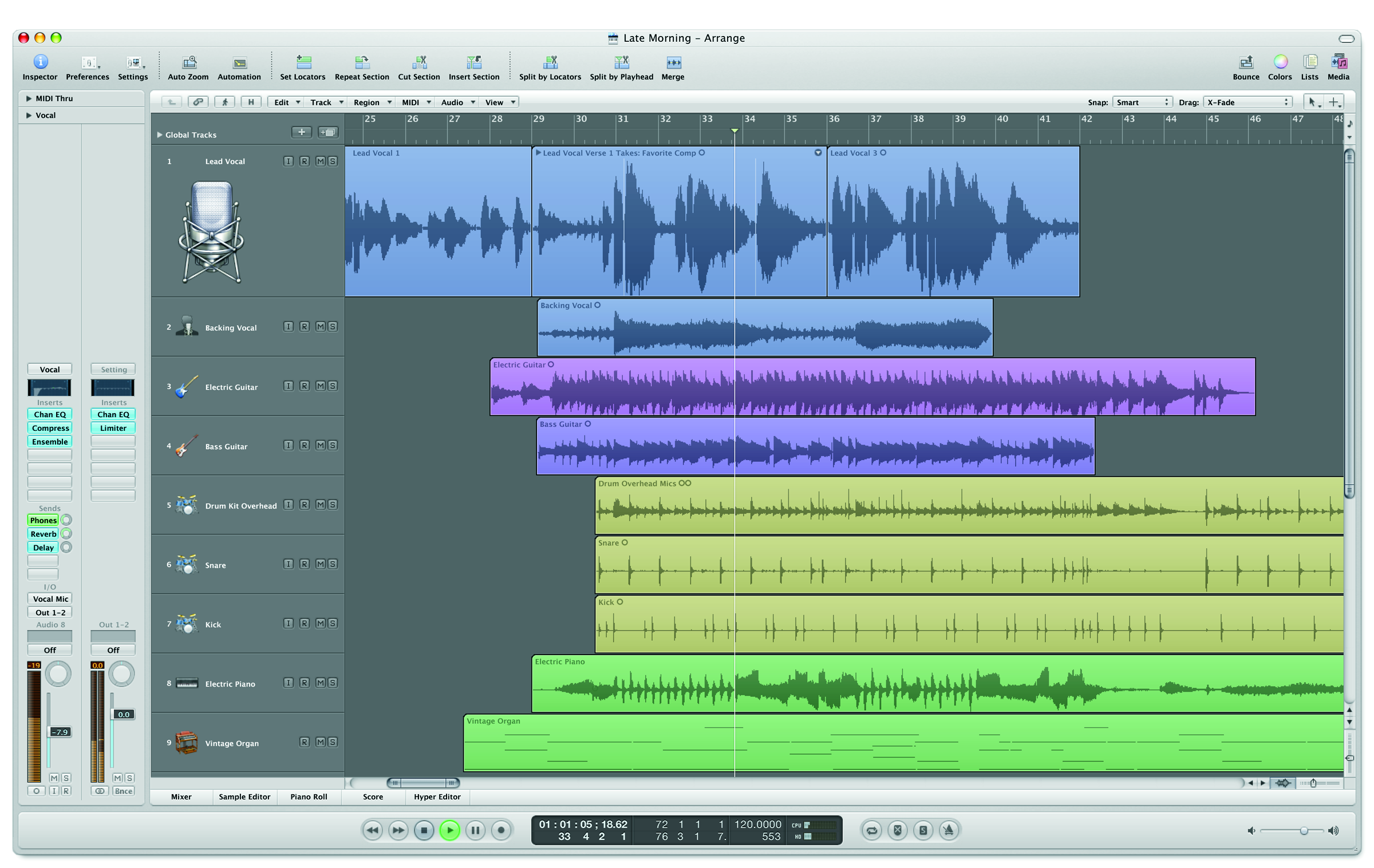

- #Logix pro software for free
- #Logix pro software for mac os x
- #Logix pro software update
- #Logix pro software driver
- #Logix pro software software
What should be the same is the active MONTAGE icon. The second MONTAGE, along with the other products that are grayed out are all instruments that were previously connected to my computer, so it will look different than yours. This shows that the MONTAGE is currently connected. Devices that have been previously connected will also appear but will be grayed out if they are not currently connected: Any device that is connected to the Mac will appear here. Next, open the MIDI Studio view by selecting "Window" from the menu and "Show MIDI Studio".
#Logix pro software driver
This is what you should be seeing if the Yamaha Steinberg USB driver has been installed. All of these digital inputs and outputs will appear in Logic in the same configuration. 1-2 is the physical main stereo out, 3-4 is the USB digital out from the computer and 5-6 are the physical assignable outputs. On the right are the 3 pairs of outputs from the Mac back to the MONTAGE. These can be configured as stereo pairs or as separate mono inputs to the Mac within each MONTAGE Performance. USB 3-32 are each of the individual inputs. The audio setting above on the left shows the 32 digital inputs from MONTAGE to the Mac, with USB 1-2 being the main stereo out. Below is what it should look like when MONTAGE is connected at the default 44.1 kHz/24-bit setting: Open the Audio MIDI Setup application choose "Show Audio Devices" under the "Window" Menu.

#Logix pro software software
Once all the software components are properly installed and MONTAGE is connected to the Mac, open the Audio MIDI Setup application that resides in the Utilities folder (located inside the Applications folder).
#Logix pro software for mac os x
#Logix pro software update
Update your MONTAGE before starting this tutorial (Version v1.20).
#Logix pro software for free
Logic Remote for iOS can be downloaded for free from the Apple App Store. The software runs under macOS 10.15 or later.

The update for previous owners is, of course, free of charge. You can get Apple Logic Pro X 10.6 from the Apple App Store at a price of EUR 229.99. We expect a flood of updates from developers and manufacturers to facilitate the transition. It will take time before many plug-ins, apps, and pieces of hardware work properly under Big Sur and with the M1 Macs. If that’s not the case, however, our advice is to postpone purchasing an M1 Mac or updating your Intel Mac to macOS Big Sur.

If you only work with Logic and its internal instruments and effects, your new M1 Mac is pretty much ready to go. The new version of the Logic Remote app features the Step Sequencer to let you build beats and grooves from the touchscreen. Another goodie is the ability to remote control Logic Pro X even better and more elegantly with the iPad, iPhone, or iPod touch. The connection and the configuration are carried out automatically. Simply connect the controller and get started. For example, Logic Pro X 10.16 is now compatible with all Novation Launchpad controllers. We expect the first performance results sometime next week, as this is when the first ARM Macs will be delivered to customers.Īs expected, the software updates also contain bug fixes and some new features. Indeed, the Logic Pro X update was released alongside compatibility updates for Final Cut X, Motion, and the Apple office apps – Pages, Numbers and Keynote. Apple updated its DAW surprisingly quickly, wasting no time to make those new Macs production-ready out of the box.


 0 kommentar(er)
0 kommentar(er)
